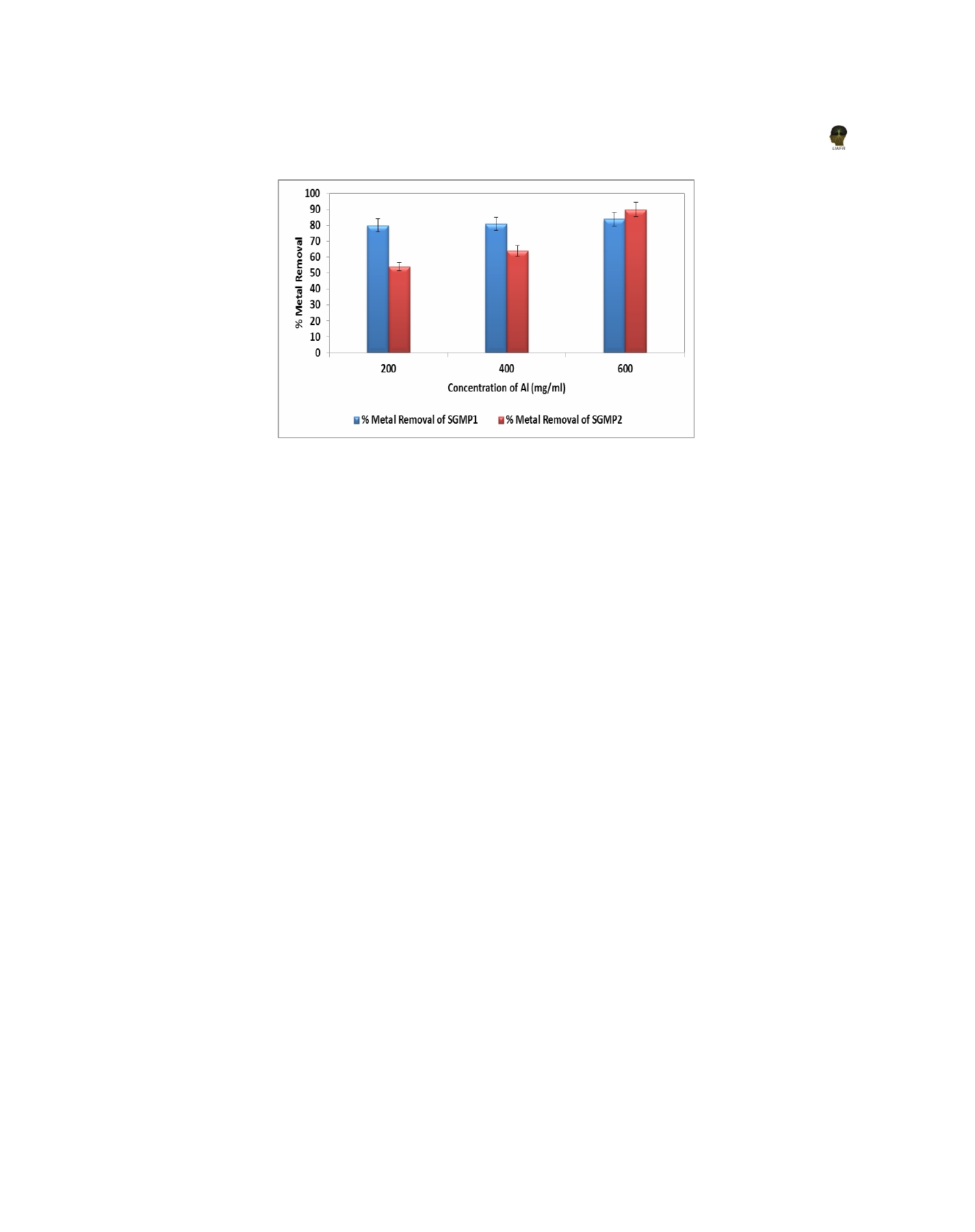
Production of Exopolysaccharide
Fig 11(c). Fig 11(c): Effect of initial Al +2 on Al removal efficiency using fungal isolates SGMP1 and SGMP2
Analysis of EPS as emulsifier
Effect of initial Fe +3 /Al +3 on Fe/Al removal using fungal
isolates
The emulsifying activity of EPS is determined by its
strength of retaining the emulsion of the hydrocarbon
The maximum Fe removal 87% and 92% were found at
in water (Mathur et al., 2010; Jagtap et al., 2010). EPS
high concentration 600 mg/l for SGMP1 and SGMP2
produce from SGMP1 and SGMP2 fungal culture showed
fungal isolates, respectively (Fig. 11(b)). 82.24% and
emulsifying activity against coconut oil, sesum oil and
84.84% of Fe +3 removal was reported in Plerotus sajor-
cotton oil.
raju and Plerotus floridianus respectively (Prasad
and Raleganker, 2013). As shown in (Fig. 11(c)), the
Various metal removals efficiency determination using
maximum Al removal 84 % and 90 % were found at
fungal isolates
600 mg/l concentration of Al +3 for SGMP1 and SGMP2
The metal removal efficiency was analyzed using
fungal isolates, respectively. Agaricus campester has
been most effective in aluminum removal. Omeike et al.,
different metal salts (K 2 Cr O , AlCl and FeSO ). The Cr
2
7
2
4
removal efficiency was 34 % and 50 % at the 100 mg/ml
(2013) reported that Aspergillus oryzae was removed 45
concentration of Cr +6 for the fungal isolates SGMP1 and
% of Al at 10-20 mg/l concentration of Al +3 .
SGMP2, respectively. The fungal isolates SGMP1 and
SGMP2 were removed 100 % and 77% of Al +3 . However,
Conclusions
both the isolates remove 66 % and 81 % of the Fe +3 at the
Mushrooms are known to be a potential producer of
same concentration (Fig. 11(a)).
EPS. The OFAT method was carried out to determine
Bishnoi et al., (2007) reported that Cr +4 removal of
the effect of carbon source, nitrogen source pH and
Trichoderma viride was 16.06 mg/l. Toxic metals bind
incubation period for mycelial biomass and EPS
to biofilm exopolymers, and facilitating metal transport
production. The FTIR analysis of EPS showed the
and ameliorating metal toxicity. Thus, binding of heavy
presence of polysaccharides, carboxylic acids and
metals by EPS is thought to be an important mechanism
lactones group. The fungal EPS gave antimicrobial and
in the natural detoxification of heavy metal contaminated
antioxidant activities. The EPS produced by the fungal
sites (Salehizadeh and Shojaosadati, 2003).
isolate showed flocculating activity and could also act as
emulsifier. The fungal isolate SGMP1 and SGMP2 were
able to remove Al +3 and Fe +3 which shows that EPS use
521